This post contains affiliate links. We earn commissions if you purchase products from retailers after clicking on a link from our site. As an Amazon Associate, we earn from qualifying purchases.
I love music. I love sound. I can get lost for hours messing with rhythms and melodies with random instruments. On my musical walk (which is mostly just as a big hobbyist, to be honest), I’ve come across some fantastic instruments.
I hope you’re ready for a “sound adventure”. There’s so much to see, and much more to hear. These are the instruments that I’ve discovered on my own personal journey that I want to share with you. I’ll put the instruments I have more personal experience with first.
Didgeridoo
When it comes to instrument mechanics, it really doesn’t get any simpler. A didgeridoo is simply a tube.
Of course, that tube is impacted a lot by the shape and texture of the inside of the tube, but when it comes down to it, it’s just a tube.
Didgeridoo is an English name for an ancient instrument of the Aborigines in Australia, called the Yidaki.
In Australia, a Yidaki is made by taking a eucalyptus tree’s trunk which has been hollowed out by termites, and carefully hollowing out and cutting the Yidaki to the proper size.
They’ve caught on to the world, and I got mine from a touristy instrument shop.
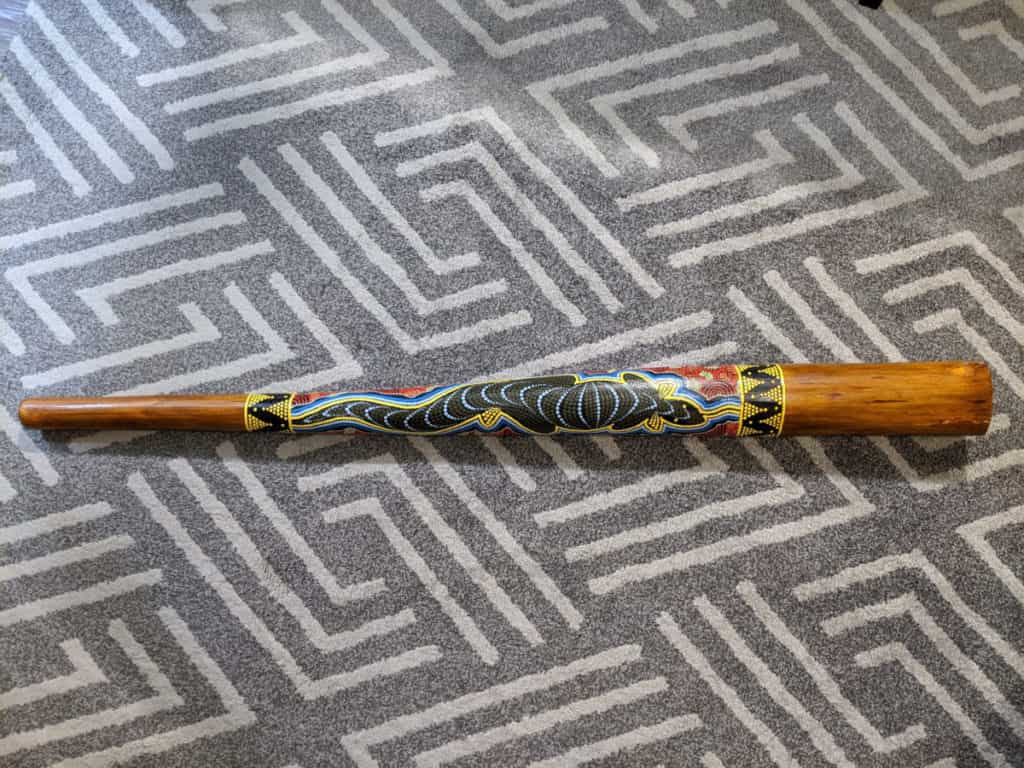
By the way, looking for recording equipment and musical instruments? Check out Sweetwater.com for microphones, monitors, audio interface or any other recording gear that you could ever need. (Affiliate Link)
By the way, looking for a guitar? Check out GuitarCenter.com for acoustic, electric, or classical guitars as well as all the guitar gear you could ever need. (Affiliate Link)
But it doesn’t stop there, a didgeridoo is amazing for a few reasons:
- Although it’s just a tube, there are so many different sounds you can get with different didgeridoos. Length, internal texture, shape, mouthpiece–all of these can change the sound drastically for a didgeridoo.
- The didgeridoo is really accessible to so many people. Many people love the instrument even if they aren’t masters at it. In fact, you can make your own didgeridoo for a few dollars with some PVC pipes to get started
- The didgeridoo community is very accepting of playing just for the joy of it, rather than needing to achieve a level of mastery (I’m looking at you, guitar peeps)
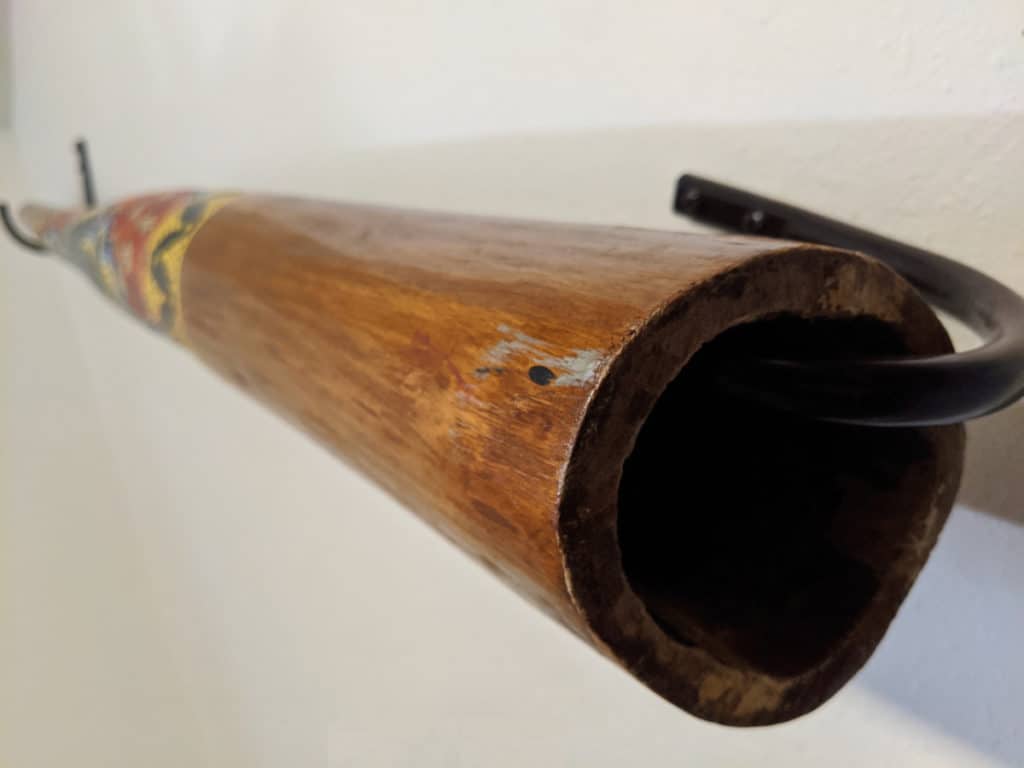
Check this video out if you want to see some of the potential of the instrument:
Jaw Harp
The jaw harp is one of those surprising instruments that you have probably heard but never knew what it was.
The jaw harp is an ancient instrument that makes a sound by plucking a metal reed inside a metal frame that’s pushed up against the player’s teeth or lips.
What’s really cool about the jaw harp is how it sounds like a sawtooth synthesizer. It sounds like you’re listening to electronic music when you’re really listening to the jaw harp.
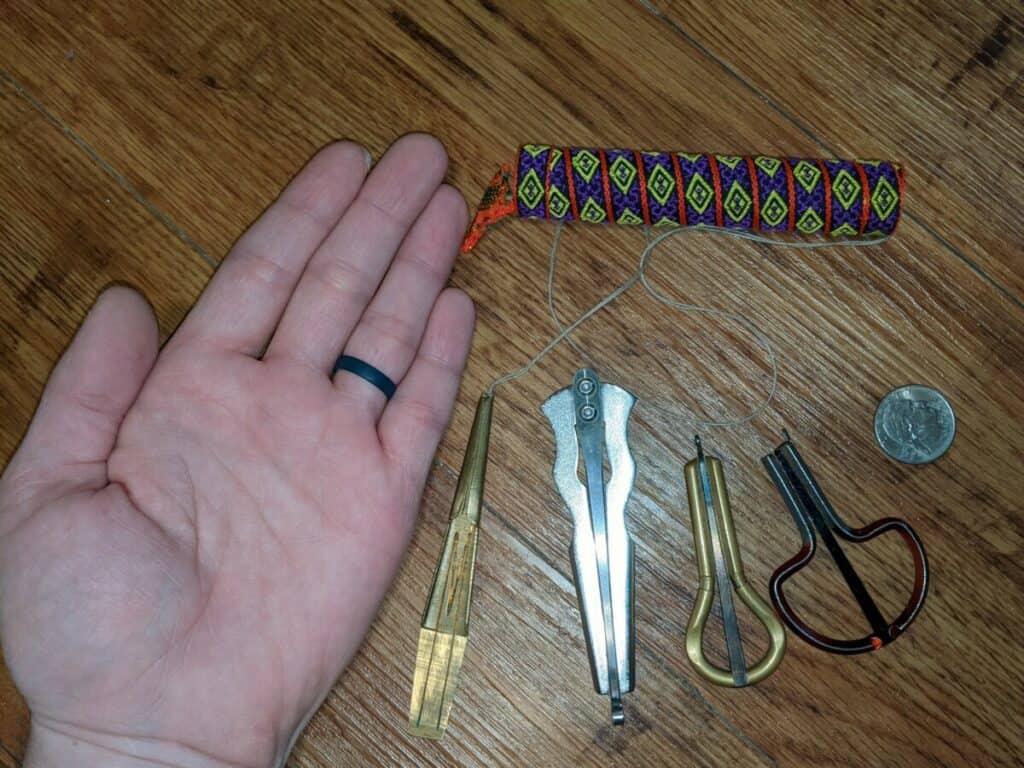
So you have this ancient instrument that sounds electronic and very organic at the same time. Also:
- There are thousands of different sizes and styles of jaw harps all giving a unique sound and flavor
- You can change and shape the sound of the jaw harp in almost infinite ways. You can breathe through it, change the shape of your mouth and throat cavity, purse your lips, or even tap or strike the instrument to mute or change the harmonic pitches.
I show how the jaw harp can make techno music here in this video:
Bones
The bones are another one of those ancient instruments that you may have heard but perhaps never seen actually played.
The bones are made by playing clacking two slightly convex surfaces together in your hand. Think of holding two cow ribs between your fingers and making them clack together. And in fact, that’s why these ancient instruments are called “the bones”.
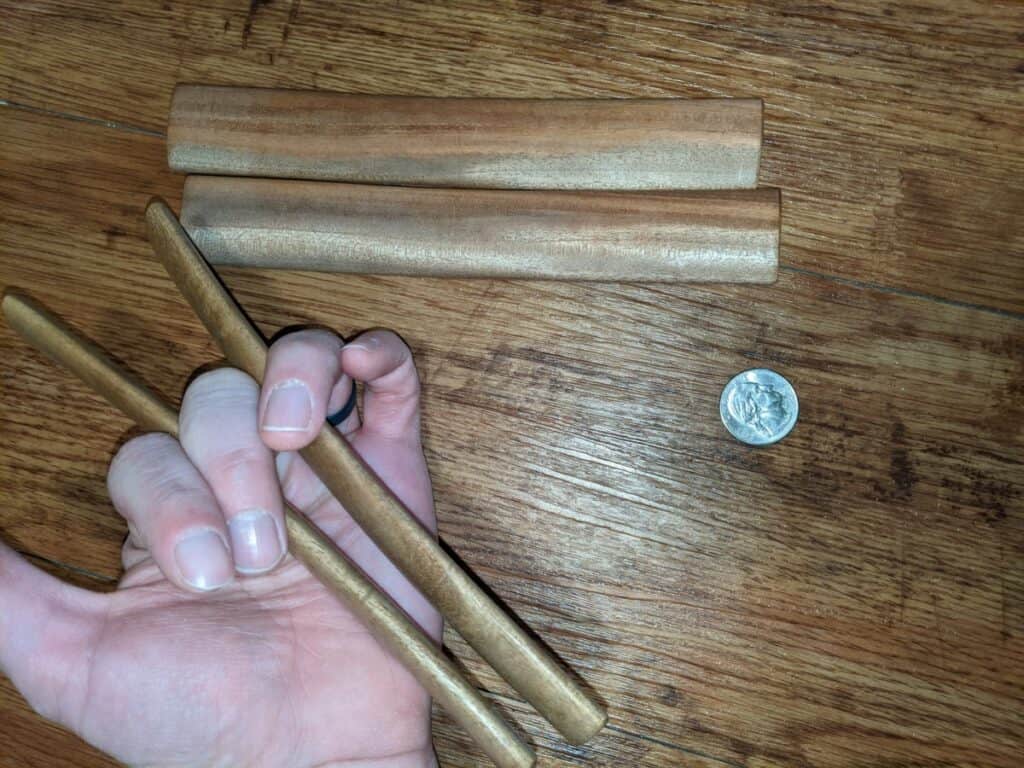
Watching a bones player for the first time you might wonder how on earth they make that sound with just two pieces of wood. Furthermore, if you ever get to try it, you’ll wonder even more.
The bones are a tricky instrument to play. It took me 2-3 hours of practicing to start making the triplet, which is a basic rhythm that the bones play.
Kalimba (Thumb Piano)
The charm and beauty of the Kalimba is one-of-a-kind. You can close your eyes and be transported by the sometimes enchanting, sometimes haunting, or even surreal tones of the kalimba.
The kalimba is essentially a set of tines that play a tone when struck. The resonation board can be a solid piece of wood or it can be hollow (like mine as you can see). The kalimba is usually played with your thumbs but can be played with your other fingers as well.
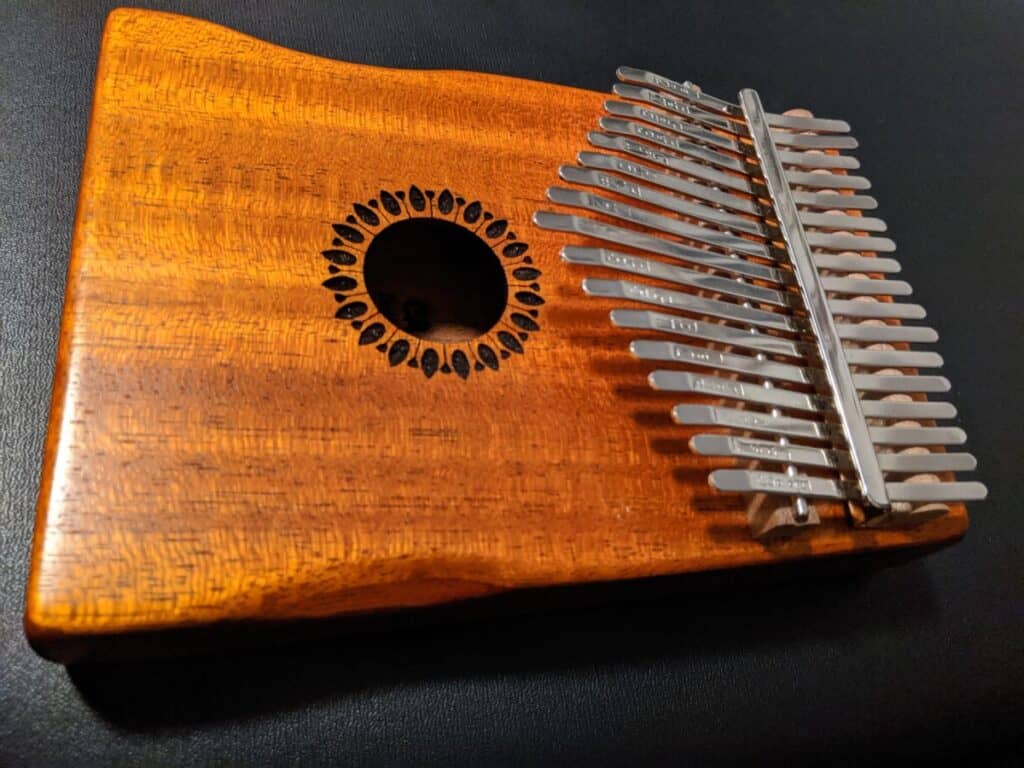
The amazing part about the Kalimba is that even though the concept is one-of-a-kind, there is no kalimba that is exactly the same as another. Each kalimba differs in its sound qualities and timbre. One kalimba will sound more organic, gritty, and metallic, and others will sound more ethereal and smooth.
Reasons why the kalimba is cool:
- Each kalimba offers different sound qualities. Sustain, tone clarity and hundreds of other factors are different from one design to the next.
- The kalimba comes in 5-key variants to 21-key, and even more. The design of the instrument has no limits as far as how many notes you can have in the instrument.
- Many kalimbas are incredibly portable. A beautiful sound that you can carry around.
I made a YouTube video about how to play the kalimba if you’re interested in the instrument:
Harmonica
The harmonica is one of those sleeper instruments that you’ve known about and always kind of put in the “quaint” category. No no, my friends–the harmonica is legit.
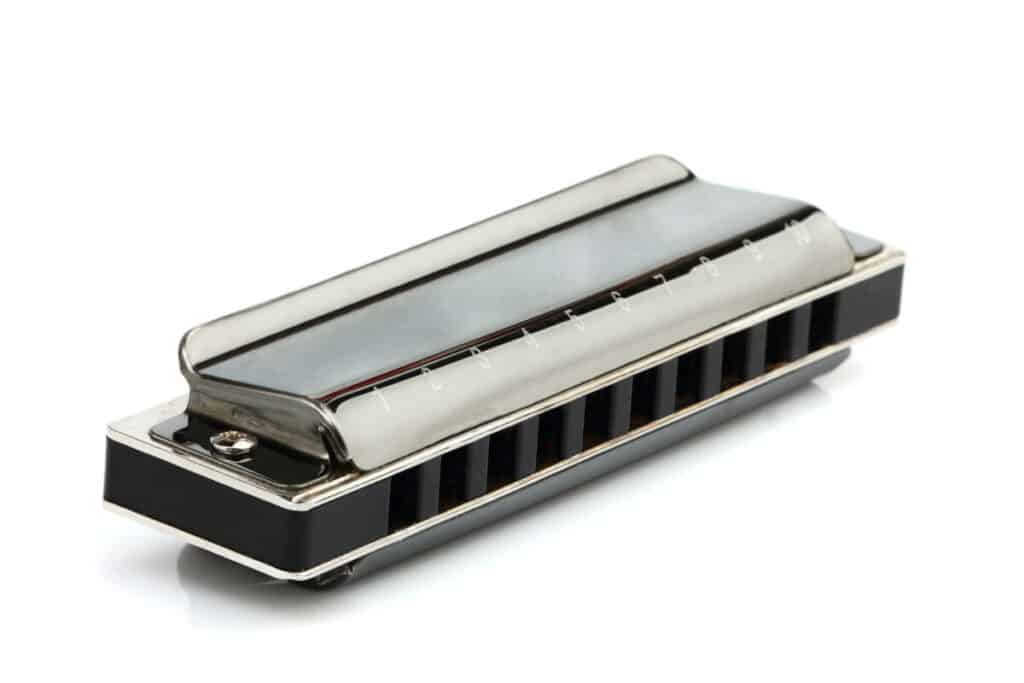
What you may know about the harmonica is that you can breathe through the instrument any number of holes and you’ll get a chord that sounds great. Additionally, the harmonica sound can be shaped by your hands, your throat, and your mouth cavity. And past that, advanced harmonica playing involves pitch bends which require exhausting techniques called overblowing and overdrawing–and that’s really just the beginning.
Put all that together, and you have one of the most expressive instruments that I know of. It’s an incredible instrument once you get to know it.
I’ve absolutely loved listening to and watching Indiara Sfair. Her ability to express emotion with the harmonica is second to none. If you don’t think the harmonica meets the cool category after watching some of it then… well. I guess we’ll have to agree to disagree.
I practiced the harmonica for 30 days, and I was amazed at how much I was able to learn, and also amazed at how I didn’t even scratch the surface of the surface. You can see it here:
Theremin
We’ve all heard the theremin even if we might not have known it. It’s the go-to spooky music sound, but it is a much more capable instrument than that.
The theremin is a synthesizer that uses electromagnetic interference to be the controller that makes the sound. The unique part about the theremin is that the artist uses their hands and hand positions in mid-air to play the instrument rather than striking or plucking something.
Here’s an example of what a theremin looks like:
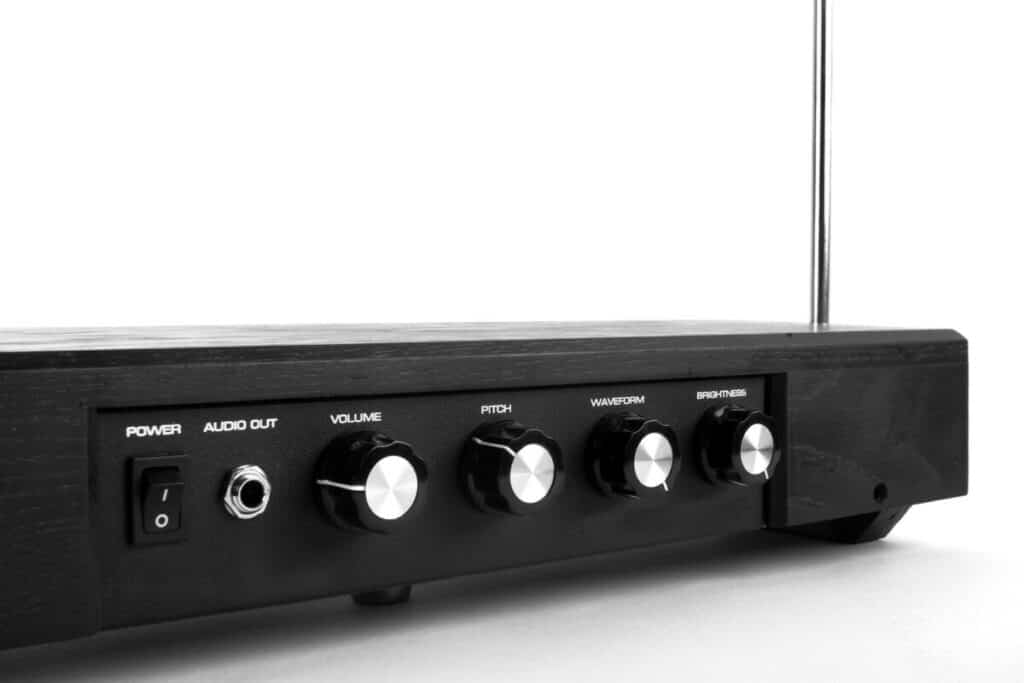
So in essence, it looks like someone playing the violin without holding anything and yet amazing sounds come out.
My favorite theremin player is Carolina Eyck. Watch her rock the theremin here:
The cool parts about the theremin:
- A contactless instrument. Something adds to the mystery and ethereal nature of the instrument when the player is moving their hands mysteriously carefully shaping the sound.
- The sound forms are so smooth: The sounds slide together, everything is a glissando, nothing is sudden.
Handpan
The handpan is a mysterious, ethereal-sounding instrument that I absolutely love. To be honest, I’m literally listening to a handpan compilation on YouTube as I’m writing this article. … I mean…. why not… here it is:
The handpan is made by striking concave indentations on a hollow disc. It seems simple, but don’t be fooled, the handpan manufacturing process is painstakingly tedious and difficult. They take weeks to make as the metal has to be heated and cooled dozens of times to temper properly.
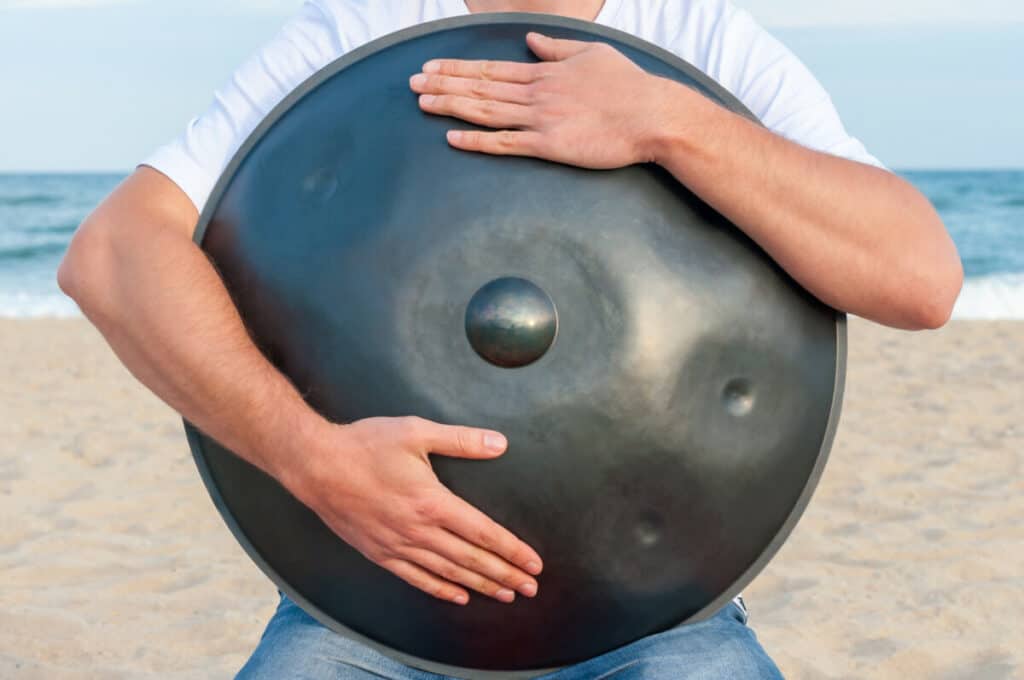
The handpan is just COOL:
- The handpan’s sound is rather dark, but depending on the scale it’s tuned to can sound heavy and sad. Or, another handpan will sound light, and uplifting. Always beautiful, though.
- The instrument is a favorite for buskers as it’s a unique sound that you can play chilling out in a subway station.
- You can use special techniques to make the handpan “sing”, or do diving pitches that take a lot of expertise to sound good at
Electric Guitar
I love the guitar. I think it’s cool. But what’s undeniably cool for most people is the electric guitar.
Because the electric guitar’s body isn’t nearly as important to making the sound as an acoustic guitar, the guitar makers can be much more creative in the design of the instrument.
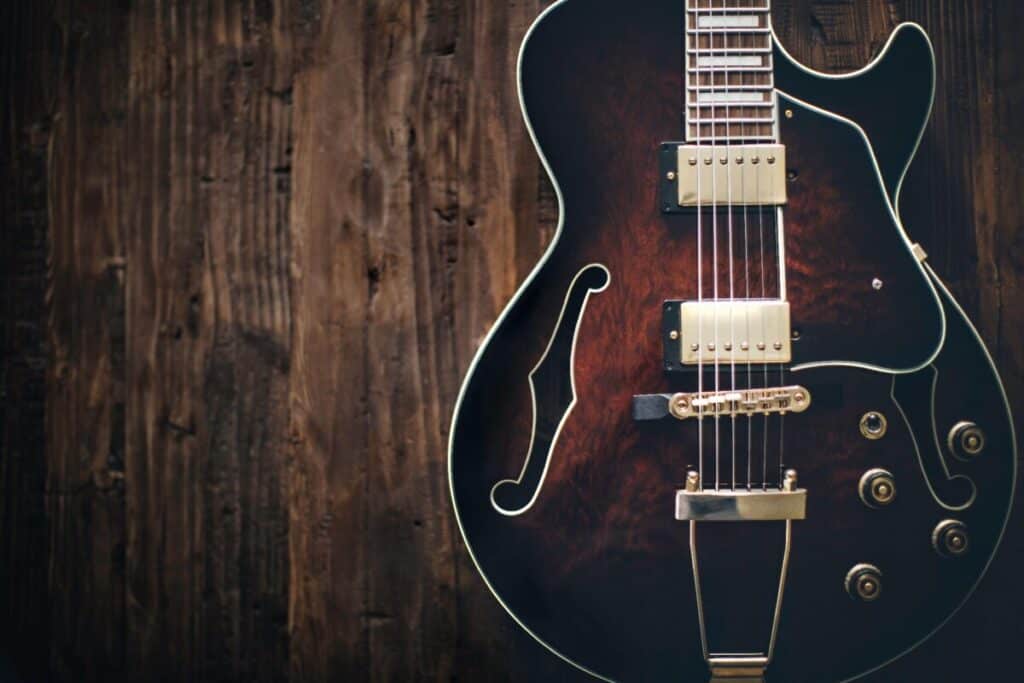
Electric guitars make their sound by electromagnetic interference, similar to a theremin. You can see in the picture directly above there are two parallel, silvery rectangles underneath the strings. Those are called “pickups”. These pickups transmit the electromagnetic interference caused by plucking the vibrating strings into an electrical signal which is then amplified in a special speaker called an amplifier.
The electronics on a guitar are complex, and to further make this more complicated, most guitarists use signal processing, often in the form of pedals, so the guitarist can adjust a particular effect by stomping their foot on it as their hands are busy playing the guitar.
- Guitarists have to practice for years to master the guitar. It’s a deep instrument you can spend your life learning
- The number of different sounds you can make with various effects is infinite. You’ll hear the electric guitar in songs that you might not realize have an electric guitar.
You’ve heard the guitar. You’ve seen it. But it’s no doubt one of the coolest instruments out there, even if it’s one of the most common.
Ammo-Box Guitar
Proving my earlier point that the body of the guitar is less important for an electric guitar than for an acoustic guitar, I absolutely loved seeing these “ammo-box” guitars from Justin Johnson:
This is a guitar from Joys guitars, and you may think that 3 strings won’t get you very far, but if you listen you’ll learn that isn’t the case.
This is more of a novelty instrument, but it goes to show the versatility of the electric guitar concept. Cool!
Double-Neck Guitar
The double-neck guitar may seem like one of those just-for-show ideas, but in the hands of a skilled performer, the double-neck guitar can make two musicians into one:
And just to prove that the double-neck guitar isn’t just a novelty instrument:
What’s cool about the double-neck guitar:
- You can combine multiple guitar tunings into one guitar. This opens up so many possibilities to a skilled player
- Combined with a looper, a guitarist can build multiple guitar parts into one song with just one person
- You can have a 12-string guitar combined with a 6-string guitar neck–making completely two different sounds all at once.
Orba
The Orba is a synthesizer that fits in the palm of your hand but is capable of both melodies and rhythm, making it a powerful instrument if you learn the skills to play one.
The Orba is equipped with a gyroscope and accelerometer meaning you can literally shake the instrument to emulate a shaker, or you tip it to note bend and control your melodies. If you can be as good as the players in the demo videos, that’s undeniably cool.
- The Orba allows you to loop together different sounds, so you can carefully build your own full song, including drums.
- The Orba allows playing the music by tapping and sliding, shaking, and tipping. This can make a rich playing instrument if you can figure out the technique.
Electric Violin
The violin is an incredibly expressive instrument–it’s one of those instruments where you can feel the soul of the player through the music.
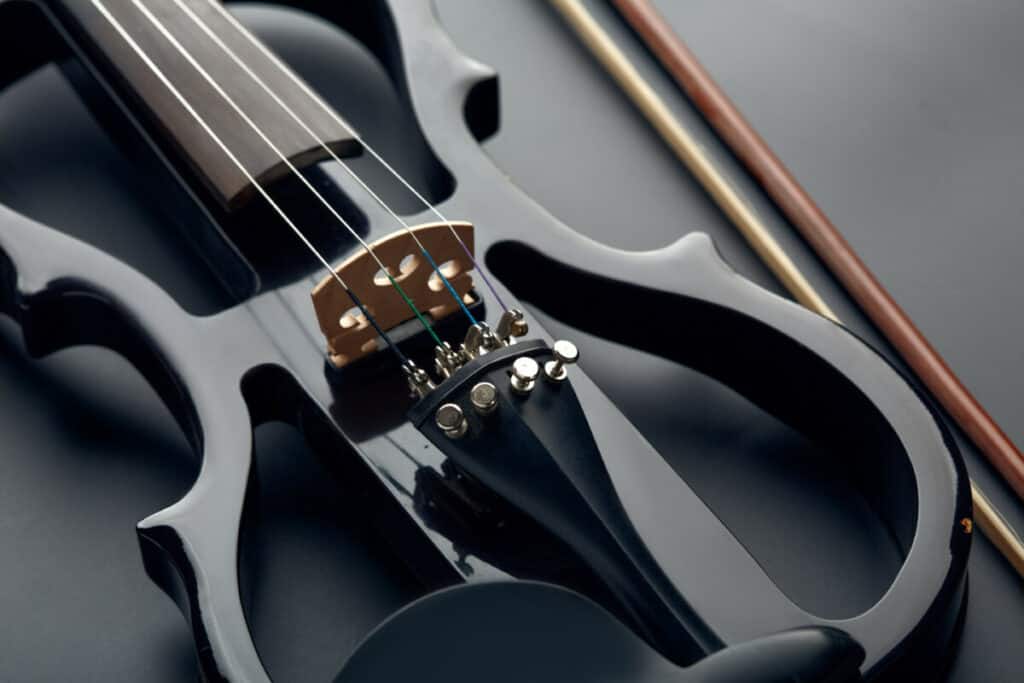
The electric violin allows the player to capture that incredible dynamic expression of a violin but reproduces it digitally. This gives the player unparalleled potential to capture the emotion of the player with a digital instrument.
- An electric violin can capture the subtle dynamics and rhythms of the violin
- The instrument can be recorded directly, no microphones are necessary
- Without the need for a resonant body–the electric violin can simply be a frame with strings, giving it a cool aesthetic.
At around 3 minutes in, he switches to a different sound form showing you the potential for a digital instrument. I admit it’s hard for me to say that the regular violin isn’t cool. I definitely think it is–I’m just trying to share with you some of the instruments that are new or that you haven’t heard of or seen.
Vibraphone
The vibraphone is not brand new but isn’t that old. It was invented in the 1920s (source), and it kind of has that steampunk vibe where you have a blend of ancient technologies with new technologies
The vibraphone is essentially a xylophone with a special moving plate with holes in it that shuffles back and forth underneath the bars of the instrument. This shuffling creates a vibrato effect, hence the name vibraphone.
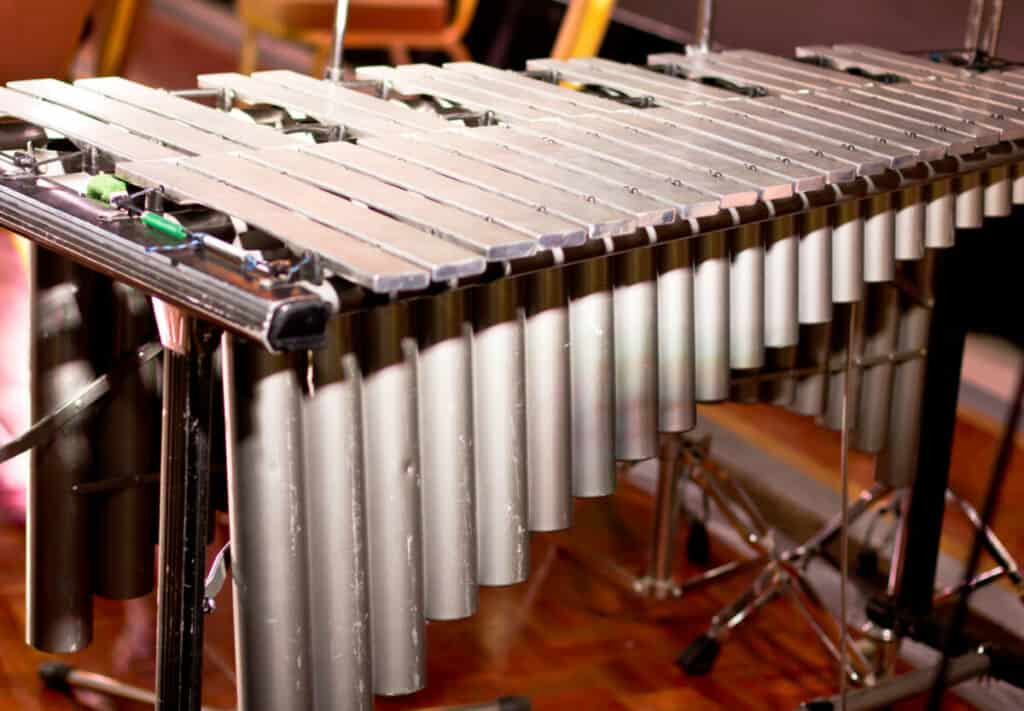
You’ve heard the vibraphone, but you may not have known how it works. It’s a beautiful instrument and represents a blend of new and old technologies.
The vibrato effect isn’t always used, but what’s also different about the vibraphone is that it has a dampener allowing for more expressive music.
I love this amazing example of the vibraphone, here:
Marble Machine
This isn’t so much an instrument that you can go buy at sweetwater or musicians friend, it’s a one-of-a-kind instrument that has been hugely inspirational for me, actually.
Really, there’s not much to say, but there’s a lot to hear. Watch this video and it just might change your life:
Martin Molin is the designer and builder and composer and everything else related to the marble machine. This machine was not securely built and was falling apart even at the time of filming. He’s been chasing the dream of a solid marble machine for the past several years and has already scrapped another design.
You can root for him along with me on his YouTube channel, here.
Music Box
On the subject of music boxes, have you looked closely at one of these things? They are incredible instruments. They are limited in that they are programmed to play one specific song for their entire lives, but the amazing detail in construction is nothing short of amazing–particularly if you remember that music boxes have been made for hundreds of years (source).
A music box primarily works from a programming wheel or disc that rotates and causes notes to be struck–in the example below you see that metal tines are plucked directly from the programming wheel. The charm of a music box is that the programming wheel is rotated with a hand crank.
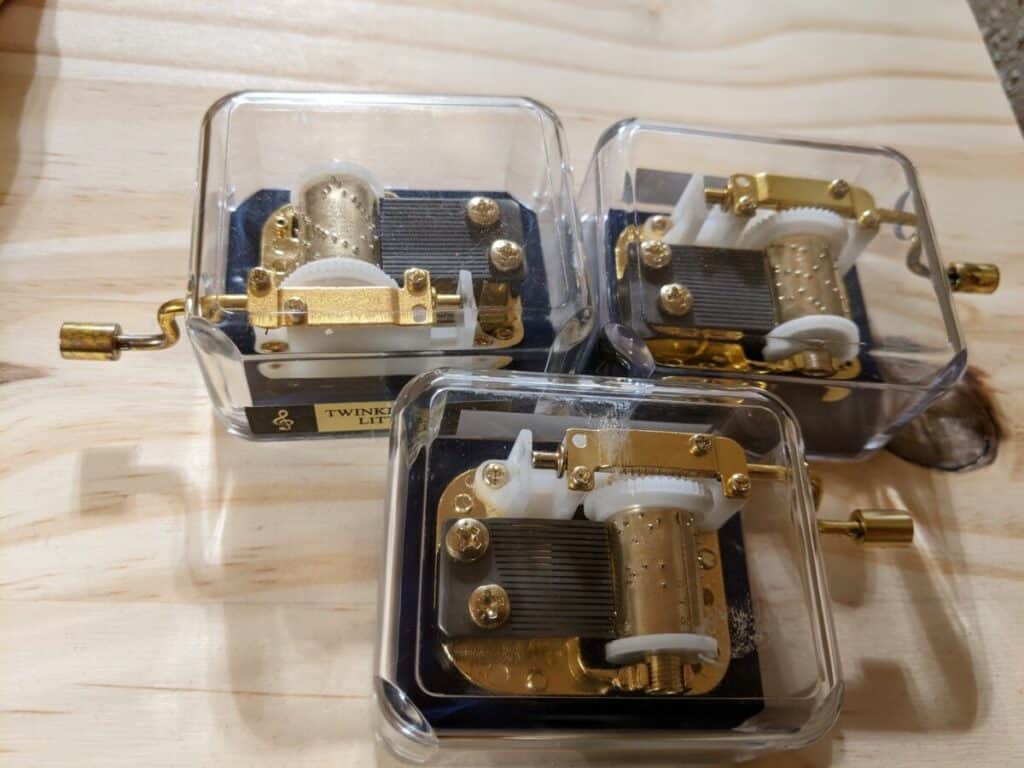
Here’s a picture of a little music box we have that is powered by the attached crank:
- The box has to be created incredibly precisely to play such a beautiful melody
- The box resonates amazingly for how small it is.
- The mechanics of the crank, the programming wheel, and the tines all working together is a marvel
There are tons of designs for a programmed music box–here is an example of one from 1902 that’s pretty large:
Djembe
There was this moment when the djembe suddenly became that instrument that everybody wanted–it has since cooled off in its popularity, but the djembe still remains a staple in ethnic percussion vibes.
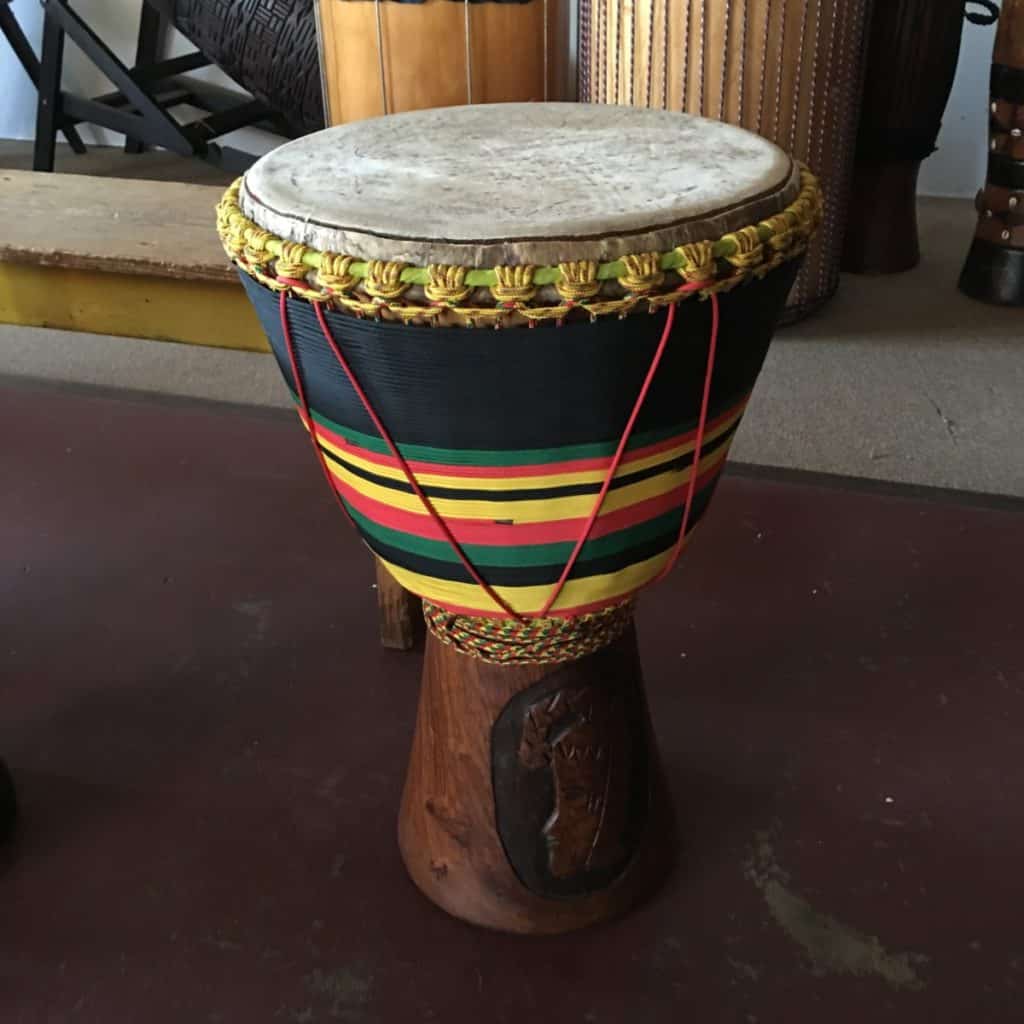
The djembe is a hand drum that is often hourglass-shaped that can range in size from 12 inches to 30 inches, tall. If you want to learn more about the djembe and how it compares to bongos and congas, check out my article, here.
What’s cool about the djembe is the number of different sounds you can get out of one drum. You can tilt the drum to get a different bass projection, slap or flick the drum in the center of the drumhead or on the edges–all of these will give you a different sound.
Furthermore, the djembe varies in its sound wildly depending on the design, size, and shape of the instrument.
Talking Drums
When you think of a drum, you think of a single unpitched sound that sounds the same no matter when you hit it (unless you tighten or loosen the drumhead). Some drums are an exception to this, including the talking drum! (and the Timpani, off the top of my head)
The talking drum is an ancient instrument that hails from countries in Africa. It’s got an amazing variety of sounds you can make by playing different parts of the drumhead but additionally, you can squeeze the drum to change the pitch of the instrument. Check out an example, here:
Glass Harmonica (Armonica)
The name of this instrument is confusing to people–it is definitely glass, but it’s definitely not like the harmonica that you’re probably familiar with.
Benjamin Franklin invented the compact, mechanical lathe design of the glass harmonica (Although he wasn’t nearly the first to play crystal glasses) that you might be familiar with–and he called it the glass armonica. (wiki)
As you might know already, if you wet your fingers with water and rub the edges of a crystal glass, it will sing. Imagine having 20 or so of those stacked horizontally like you would in a dishwasher and you roughly have the concept of the glass harmonica.
You might wonder if this instrument is just a novelty–but the iconic sound of The Nutcracker features the glass harmonica in The Dance of the Sugar Plum Faeries. That ethereal sound that introduces the song is often played by the glass harmonica.
Ocarina
The ocarina owes its fame to the renowned and popular Zelda video game franchise, particularly to “The Ocarina of Time” where the video game protagonist plays the ocarina in order to travel backwards and forwards in time.
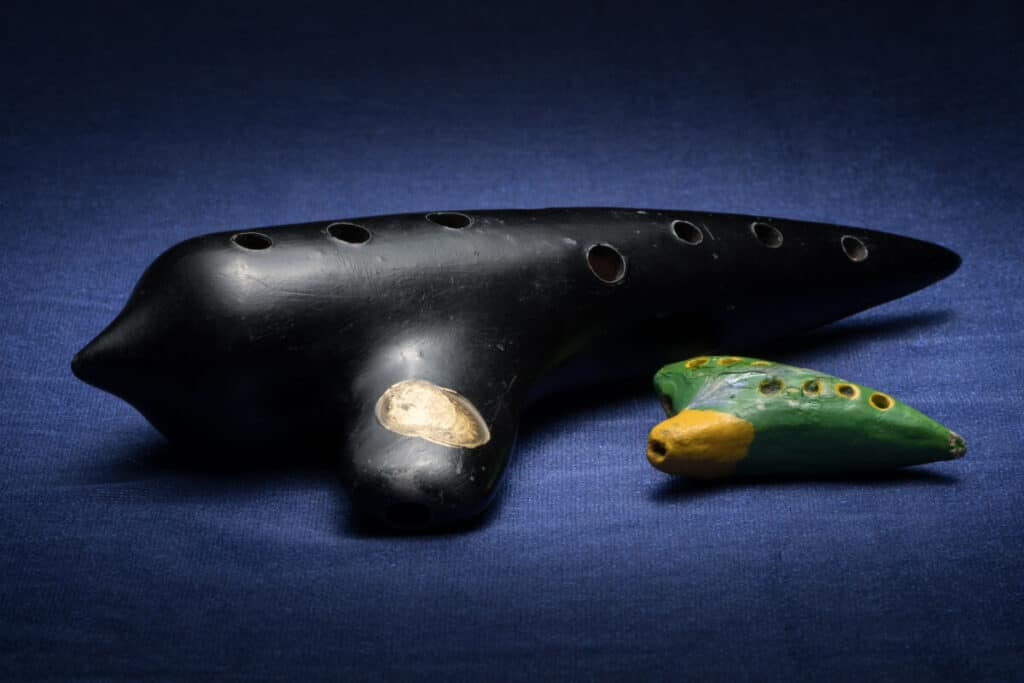
The ocarina is actually a very loosely defined term–the ocarina is essentially a chamber that can be modified in tone by covering or uncovering the holes on the instrument. You could describe the ocarina as “gourd-shaped”, as the shape isn’t exactly defined.
The ocarina is cool, in that you can have tiny ocarinas and very large ocarinas and they make a very pleasant and breathy flute sound, and the size and shape of the ocarina create its own unique sound.
Here’s an example of one ocarina, beautifully played:
Irish Flute
There are two almost indistinguishable parts of the Irish Flute that makes it cool:
1. The design and sound of the instrument
2. The incredible freedom and rich ornamentation (not to mention speed) of Irish Folk music.
The Irish flute is played similarly to the concert flute in that it’s held sideways to the player, but the concert flute is unique in its organic and earthy sound.
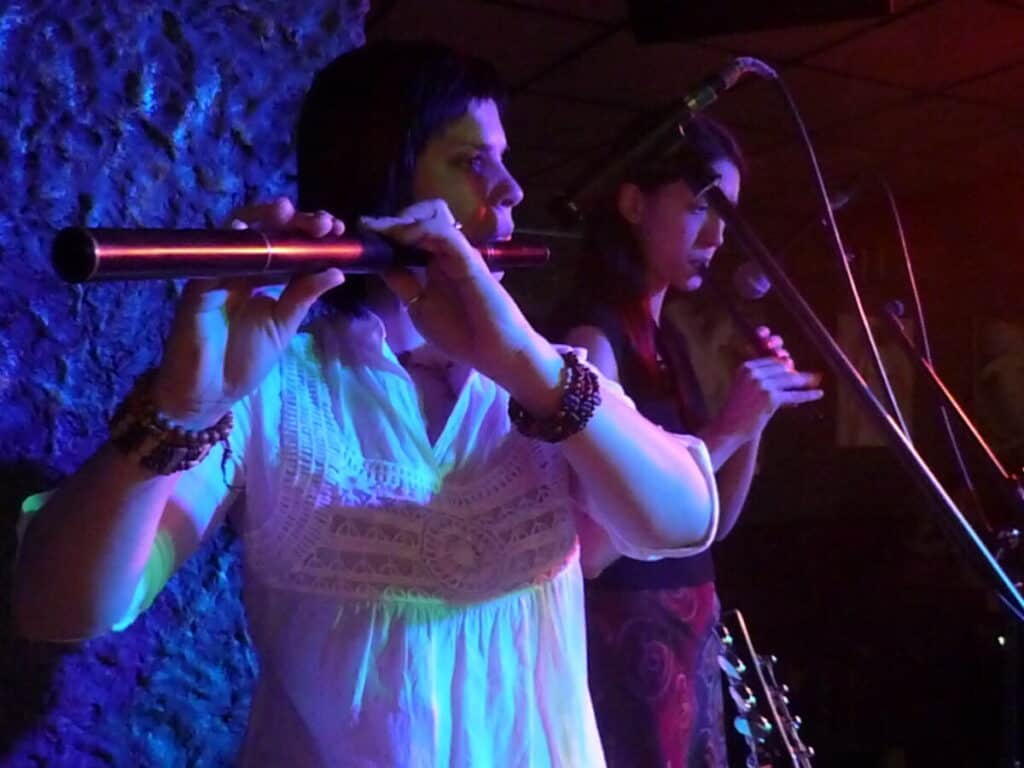
The Irish Flute, along with its little cousin, the tin whistle (see more about the instrument in my article here) feature prominently in Irish folk music.
You really can’t understand the “coolness” of the Irish flute without understanding it in context in an Irish session.
An “Irish session” is a tradition where people take over a corner of a pub and play music, together. It’s very impromptu, the musicians may never have met each other, and many sessions don’t have any sheet music reading–all the music is memorized. And long-time players of sessions can jump in even if they’ve never played that particular song before. It’s really incredible, to me. Here’s an example of an Irish flute in session (top right of the group and bottom left):
Pan Flute
The pan flute is much harder to play than it looks. For a regular flute, you have to keep your lips in the right shape and position as you blow over a single hole to make the sound. For a pan flute, you have to blow in the exact right location for each hole. I’ve tried it, and I’m pretty inept at it.
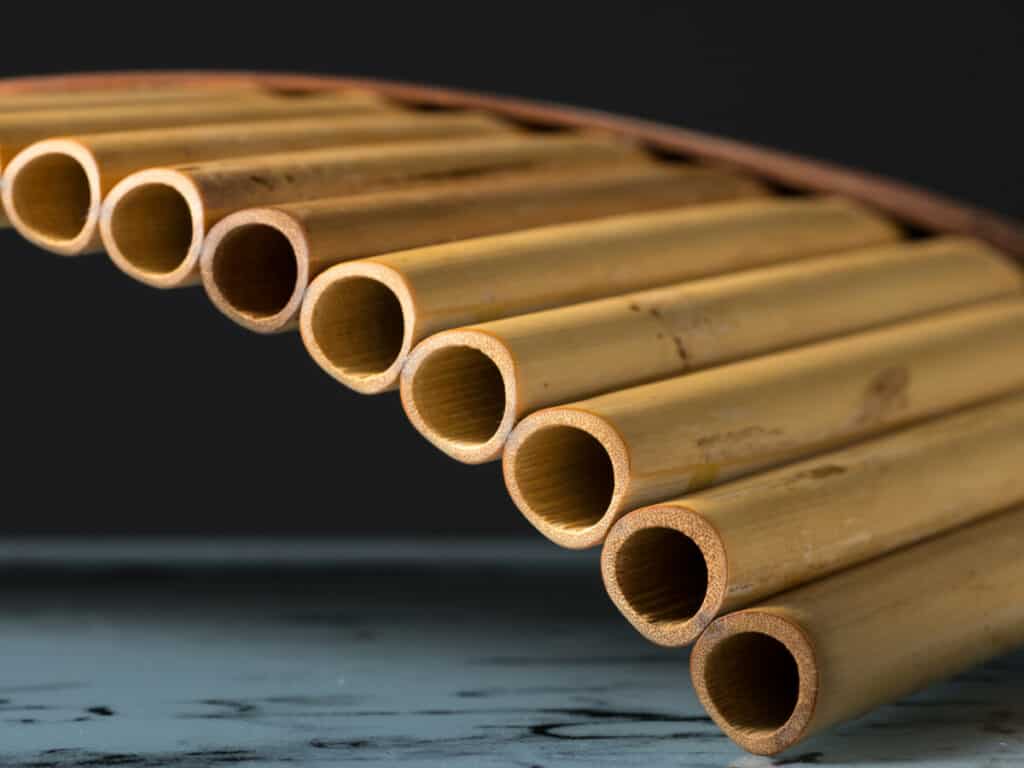
There’s an indescribable sound with the pan flute that tastes like an adventure if sound could be tasted.
The sound is made by blowing across the edges of several tubes that are typically arranged horizontally. The pan flute can come in many different arrangements and sizes with all of their different sounds.
The pan flute is cool just because it’s so exotic and has such a distinct sound–the skill required to play a pan flute is impressive and takes a lot of practice. Some pan flutes even are stacked two layers deep requiring even more accuracy to play.
These guys really go all out in their performance:
Sitar
The sitar is one of those instruments that sounds like it’s from a dream, especially when used with a bit of reverb. To me, the sound of the sitar by itself lands it in the cool category.
What you might not know–and what I certainly didn’t is that the sitar is built so it can play low bass notes as a drone while the higher notes are played at the same time.
This means that the level of coordination required from a Sitar player is next level. Guitarists do this as well, playing two parts at the same time, but that’s definitely limited to intermediate and advanced players.
Hammond Organ with a Leslie Speaker
I’ll never forget when I saw a Hammond Organ with a Leslie Speaker in person. I thought–what in the world is going on?
The Hammond Organ with a Leslie Speaker is an iconic sound that swept our music in the 60s and 70s. The “whirling” effect of this combo is due to the literal whirling of the Leslie Speaker. The speaker bell rotates as it plays creating a one-of-a-kind sound.
Rose-colored glasses aside–they’re just hip, man.
There are some who play with the cabinet open so you can see the speaker twirling around, it’s pretty wild.
Hurdy-Gurdy
The hurdy-gurdy is one of those instruments that doesn’t look real. It’s an extremely complicated instrument, combined with the fact that it’s ancient, approaching 1000 years old. (Wikipedia)
The Hurdy-Gurdy is powered by a hand crank and the strings are rubbed by a wheel whose lengths can be controlled by the opposite hand pressing keys or the strings themselves.
You can check out an example of a playing of the hurdy-gurdy here:
Laser Harp
A laser harp is a novelty instrument that you might have seen. Jean-Michel Jarre uses them in almost all of his concerts. (Wikipedia)
Believe it or not, you can actually buy a laser harp here if you’ve got a few thousand dollars to spare.
